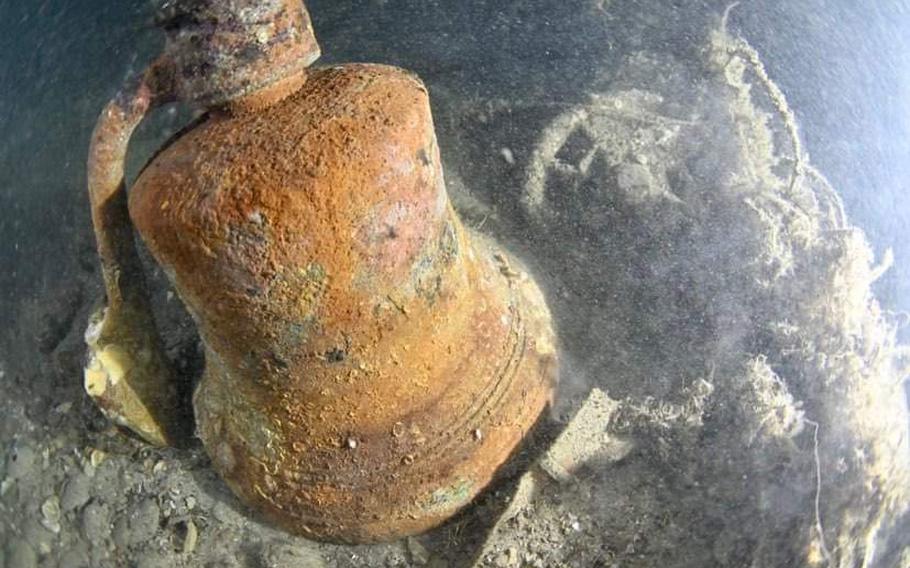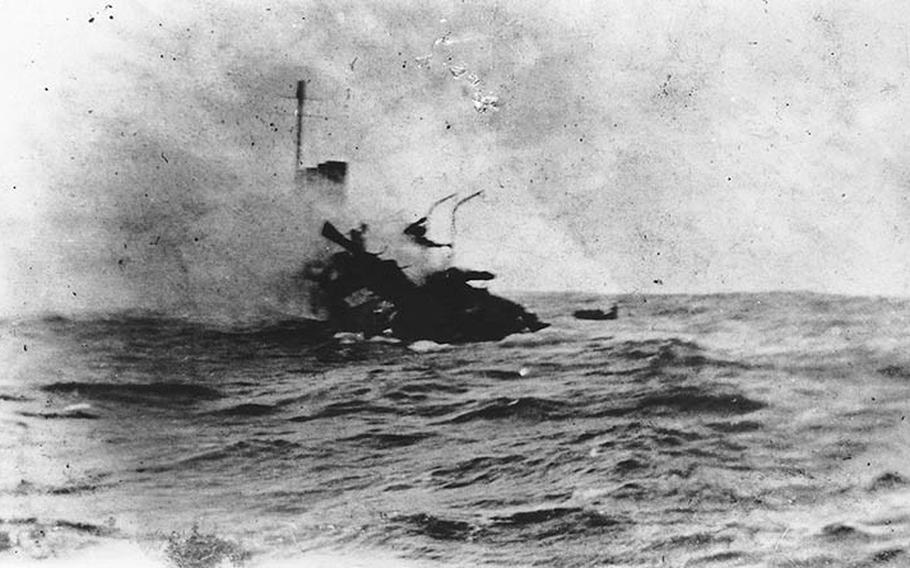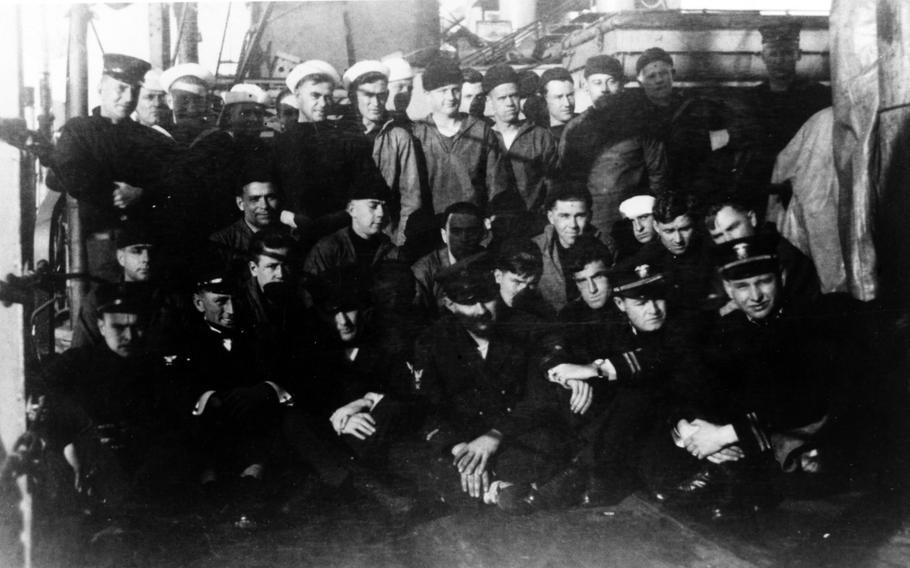
The wreckage of the World War I destroyer USS Jacob Jones was discovered Aug. 11 by members of the UK diving team Darkstar 60 miles south of Newlyn, Cornwall, Darkstar team member Steve Mortimer announced in a Facebook post. (Rick Ayrton/Facebook)
The USS Jacob Jones, the first U.S. destroyer to be sunk by enemy fire, has been found.
The wreckage of the World War I destroyer was discovered Aug. 11 by members of the UK diving team Darkstar 60 miles south of Newlyn, Cornwall, Darkstar team member Steve Mortimer announced in a Facebook post. The Naval History and Heritage Command also announced the discovery on Twitter.
“Nothing was removed from the wreck site and we will be liaising with the US Embassy over next steps,” Mortimer wrote.
The Tucker class destroyer (DD-61) was commissioned Feb. 10, 1916, and deployed to Europe on May 7, 1917, roughly a month after the U.S. entered WWI.
The ship was involved with several rescue operations that year, according to the Navy. After the British steamship Valetta was sunk by U-boat fire in July, the Jacob Jones picked up 44 survivors. That same month, the British steamer Dafila was sunk by a torpedo while being escorted by the Jacob Jones, which rescued 25 survivors. The Jacob Jones picked up another 305 survivors from torpedoed British cruiser Orama while conducting escort duty between Ireland and France.

The USS Jacob Jones sinks off the Scilly Islands, England, on Dec. 6, 1917, after she was torpedoed by the German submarine U-53. (William G. Ellis/Smithsonian Institution)
The Jacob Jones was struck by a torpedo on Dec. 6, 1917, 25 miles southeast of Bishop Rock, Scilly Islands, and 20 miles east of Start Point, England, while en route from Brest, France, to Queenstown, Ireland. The destroyer sank eight minutes after it was hit with two officers and 62 men still onboard, according to the Navy.
Two injured survivors were taken prisoner by the attacking German submarine U-53, which surfaced soon after the sinking. The survivors floated on life rafts, boats and drifting debris as British sloop-of-war Camellia and British liner Catalina conducted rescue operations overnight.
Out of a crew of 110, 64 men died. Lt. Stanton F. Kalk, officer-of-the-deck when the torpedo hit, died of exhaustion and exposure while helping his crewmates onto lifeboats, and was posthumously awarded the Navy Distinguished Service Medal. Chief Boatswain’s Mate Harry Gibson and Chief Electrician’s Mate L. J. Kelly received the Navy Cross as well as letters of commendation along with Chief Boatswain’s Mate Charles Charlesworth, according to the Navy.

USS Jacob Jones survivors following their rescue. Jacob Jones was sunk off the Scilly Isles by the German submarine U-53 on Dec. 6, 1917. (Donald J. Robinson/U.S. Naval History and Heritage Command)